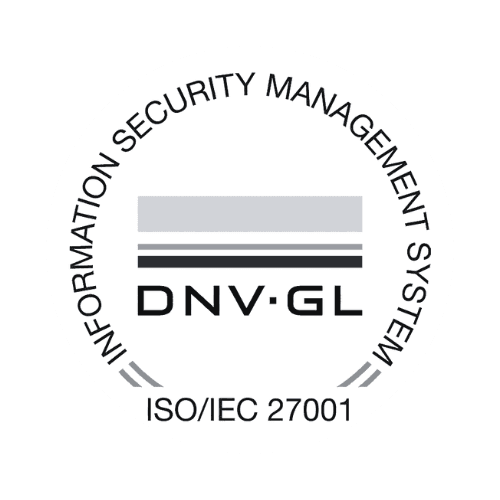Sé el primero en saberlo
Written by AI
SaaS vs. Traditional Software – Which Solution is More Cost-Effective?
In today’s business world, companies face the challenge of choosing the right software solution for their business needs. An important decision in this regard is the choice between Software-as-a-Service (SaaS) and traditional software. Both options have advantages and disadvantages, but which model is really more economical? In this article, we will look at a cost comparison between SaaS and traditional software and discuss the more cost-effective solution.
Definition and Differences Between SaaS and Traditional Software
What is SaaS?
SaaS is a model in which software is provided over the Internet. Instead of installing and operating the software on their own servers, users simply access the application via the Internet. The software is hosted and maintained by a provider, while users only need a web browser to access it.
What is Traditional Software?
Traditional software, on the other hand, is installed and operated directly on the users' computers or servers. The software and the associated data reside locally on the users' devices. This usually requires the use of one’s IT resources for installation, maintenance, and updating the software.
An interesting aspect of SaaS is its scalability, allowing companies to flexibly adjust their software usage to meet their requirements. Since the software is hosted in the cloud, users can easily purchase or reduce additional licenses as needed without extensive installations or configurations.
Another advantage of traditional software is the complete control over the data, as it is stored locally. This can be particularly important for businesses with strict data protection requirements or regulatory regulations, as they must ensure the security and confidentiality of their data.
Cost Structure of SaaS
Monthly or Annual Subscription Fees
In SaaS models, users typically pay monthly or annual subscription fees to use the software. These fees are usually transparent and easy to budget for, as they occur regularly and are included in the company’s operating costs. Companies can adjust the number of licenses or add additional features to meet their needs.
SaaS models offer companies the flexibility to adapt their software usage to current requirements. With the ability to add or remove licenses, companies can control and scale their costs as their business grows. This allows for efficient resource usage and optimal budgeting.
Costs for Additional Services
In addition to subscription fees, additional services such as training, support, or consulting costs may be incurred. These services are usually billed separately and can vary depending on the company’s needs.
Utilizing additional services can help companies fully leverage the potential of SaaS software. Training helps employees use the software effectively, while support is available for technical problems or questions. Consulting fees can help companies develop tailor-made solutions and optimize their business processes.
Cost Structure of Traditional Software
One-time License Fees
Traditional software is often acquired by purchasing licenses. Users pay a one-time license fee to purchase the software and install it on their systems. Depending on the scope of the software and the number of users, the license fees can be substantial.
Maintenance and Upgrade Costs
In addition to license fees, companies must also consider the costs for maintaining and updating traditional software. These costs can vary and depend on factors such as the number of systems, the complexity of the software, and the support requirements.
The one-time license fees for traditional software can vary significantly depending on the provider and product. Large software companies often charge higher license fees for their products, as they typically offer a wide range of features and an established reputation. Smaller providers, on the other hand, may offer lower-priced licenses to compete in a competitive market.
Implementation Costs
Another important aspect of the cost structure of traditional software is the implementation costs. These include the costs of customizing the software to meet a company’s specific requirements, training employees to use the software, and integrating it into existing systems. Implementation costs can make a significant part of the overall budget for the software and should therefore be planned and considered carefully.
Economic Aspects of SaaS and Traditional Software
Scalability and Flexibility
A major advantage of SaaS is its scalability and flexibility. Companies can increase or decrease the number of licenses as needed, leading to a more flexible cost structure. In contrast, with traditional software, companies often have to purchase licenses in advance and can find it difficult to adjust them to changing requirements.
The scalability of SaaS solutions allows companies to quickly adapt to changes in their business environment. By being able to flexibly adjust their use of software licenses, companies can respond more efficiently to growth opportunities and save costs by reducing unused licenses.
Time to Return on Investment
Another important economic aspect is the time to return on investment (ROI). SaaS solutions can achieve ROI faster, as initial investments are typically lower, and no extensive infrastructure is required. In contrast, with traditional software, it may take longer to achieve ROI due to higher initial investments.
The lower initial investments in SaaS solutions allow companies to benefit from the advantages of the software more quickly. With monthly billing and the ability to subscribe only to the required features, companies can reduce costs and achieve a positive return more quickly.
Conclusion: SaaS or Traditional Software - Which is the More Cost-Effective Solution?
The more cost-effective solution between SaaS and traditional software depends on the individual requirements and budget of the company. SaaS offers a transparent cost structure, higher scalability and flexibility, as well as a faster ROI. Traditional software, on the other hand, allows for greater control over the data and may be more cost-effective for long-term use. Therefore, companies should analyze their specific requirements and conduct a thorough cost analysis to choose the right software solution for their needs.
When deciding between SaaS and traditional software, it is also important to consider data security. SaaS solutions are typically hosted in the cloud, which provides advantages such as automatic updates and improved scalability. However, this can also raise security concerns as sensitive company data is stored externally. Traditional software, which is installed locally, offers more control in this regard, as the data is stored on internal servers. Companies must therefore weigh how much importance they attach to data security and how this affects their decision between SaaS and traditional software.








